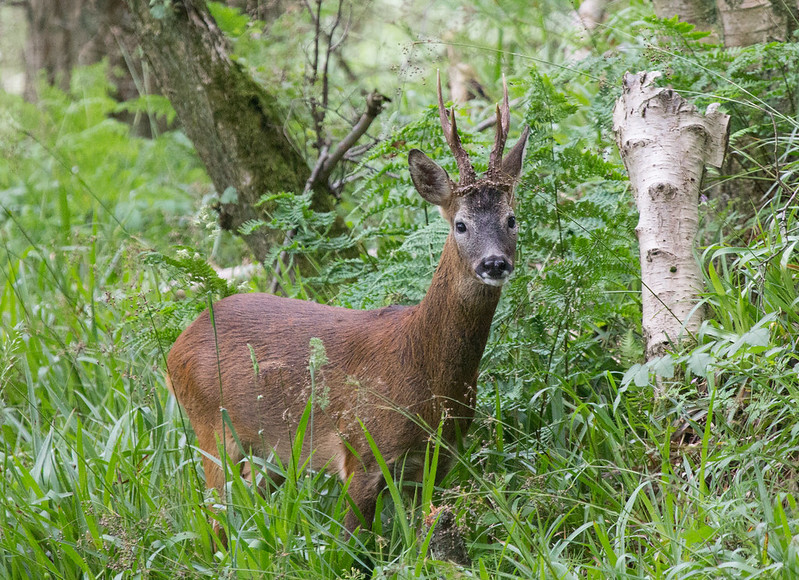Scientific name: Capreolus capreolus
Family: Cervidae
Appearance: Adults are 60 - 75cm at the shoulder and weigh 10 - 25kg. Males are slightly larger than females. A summer coat of reddish brown turning to grey, pale brown or (occasionally) black in winter. They have a black nose, white chin and white rump patch, and exhibit a bounding gait when alarmed. Males grow short antlers (less than 30cm) which have up to three tines (points) on each. These antlers are shed each Autumn and new ones will begin to grow from November.
Natural history: Widespread in the UK, roe deer are browsers found mainly in woodland and agricultural areas. The rut, or breeding season, occurs between mid-July to mid-August. Bucks become aggressive and maintain exclusive territories around one or more does prior to the rut. Fights between bucks can result in serious injury or death with the winner taking over the loser’s territory or attendant doe. Courtship involves chasing between the buck and doe for some time until the doe is ready to mate. Although mating occurs in this period the fertilised egg does not implant and grow until January. This is thought to be an adaptation to avoid giving birth during harsh northern winters. The gestation period is nine months (four months of no embryonic growth followed by five months of foetal growth) with kids (usually two or three) being born May – June. Initially, young will be left hidden in dense vegetation while the mother goes off to forage, but as they develop they will start to follow their mother around more. Heavy mortality may occur shortly after birth and during the first winter. Roe do not maintain exclusive territories but live within overlapping home ranges. Males mate with several females and females mating with several males has also been observed. Roe deer are solitary, forming small groups in winter. They are active throughout the 24-hour period but make more use of open spaces during the hours of darkness in populations experiencing frequent disturbance. Peak times of activity are at dawn and dusk. Long periods are spent ‘lying up’ where the deer lies down to ruminate between feeding bouts. (Source: https://www.bds.org.uk/index.php/advice-education/species/roe-deer).

(C) Philip Stephens (shared under a CC BY-NC 2.0 license)

 English (United Kingdom)
English (United Kingdom)  Nederlands (nl-NL)
Nederlands (nl-NL)  Magyar
Magyar  Deutsch (Deutschland)
Deutsch (Deutschland)  Croatian (Hrvatski)
Croatian (Hrvatski)  Polski (PL)
Polski (PL)  Español (España)
Español (España)